Semi-detached: an unusual Oxford house conversion by Delvendahl Martin

London-based Delvendahl Martin Architects have tastefully converted two Victorian semi-detached houses to form a single, bright and spacious 350sqm family home in central Oxford, completed this summer. With minimal intervention to the front façade, the drama is reserved for the rear, where a smart two-story extension creates a strong visual link between the two, 'making the building look like one house as it was originally intended,' say the architects.
Internally, a central feature staircase, clad exclusively in stained timber, is positioned perpendicular to the party wall, creating a lynchpin for the merged layout. 'The existing symmetrical arrangement gets thus rotated to achieve a continuous flow of spaces throughout each floor,' explain the architects. The ground floor encompasses the open plan living/kitchen/dining spaces, with three bedrooms and a bathroom on the first floor, and a master bedroom, bathroom and office/ studio space on the second.
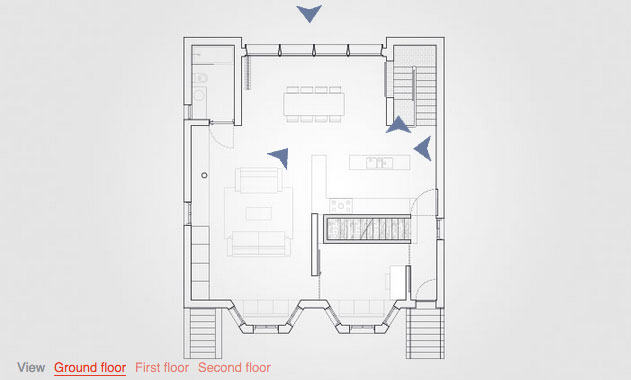
Take an interactive tour of Oxford House
Expressed as solid brick bookends sloping to frame a recessed central bay, the extension is a clever ploy allowing plenty of daylight into the open plan living area. Constructed from bricks reclaimed from the demolition process, the 'outriggers' accommodate ancillary spaces and a second stair that negotiates the level difference to the lower ground floor level. Accessed from the open-plan living area, the brick stair core appears pleasingly open to the elements, with a frameless glass lid encouraging further daylight in. A self-contained lower ground floor offers an additional open plan living/kitchen/dining space, two bedrooms and a bathroom.
Reinforcing the notion of unity, the central bay spans internally the formerly-separate structures and features a contrasting palette of materials, including a darker brick that forms a loggia at garden level, and floor to ceiling glazing at upper ground level. Anodized aluminium fins provide a degree of shade and mitigate overlooking to neighbouring properties. The glazed screen panels are openable, giving the impression of an elevated terrace with views over the two rear gardens, where rather playfully the existing dividing garden wall has been retained.
It is a game of two halves, where bold gestures have transformed these two houses into an impressive family home.

The project is designed by London-based Delvendahl Martin Architects and spans a spacious 350 sq m

A central feature staircase, clad exclusively in stained timber, is a key element of the new design
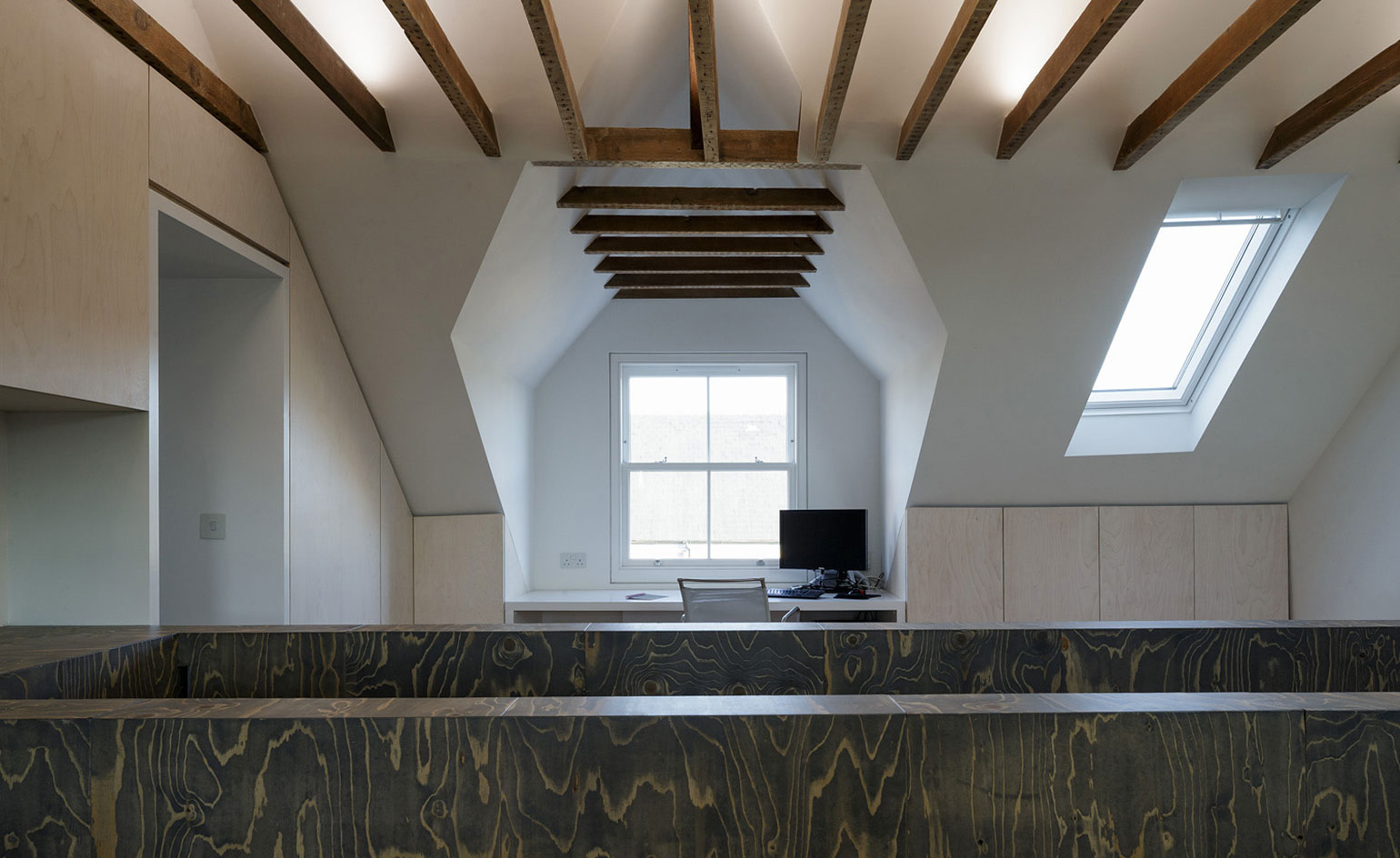
The staircase sits perpendicular to where the old partition wall was meant to be, 'pinning' the two houses together
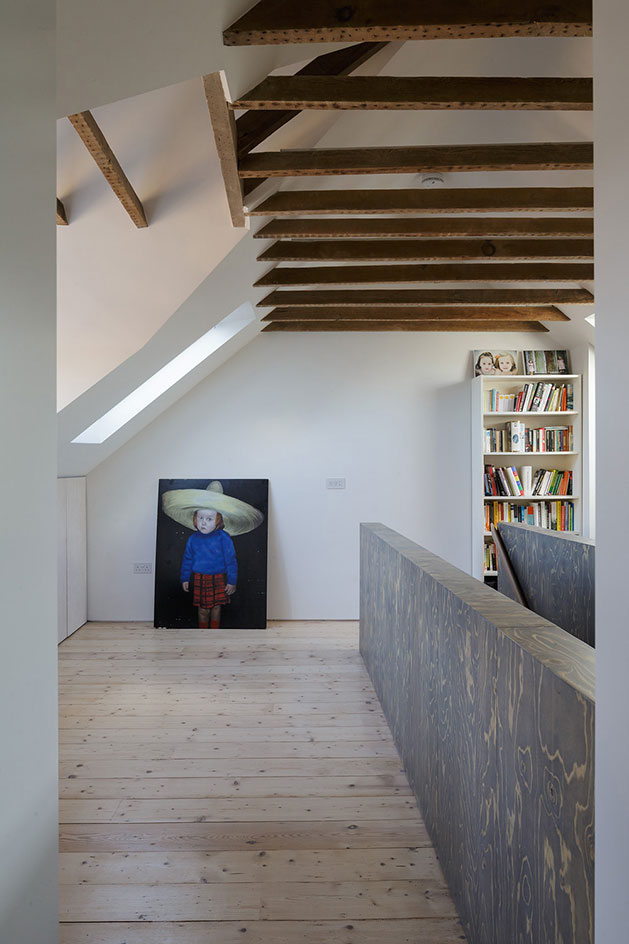
Around the staircase void, on the top floor, is a study area, leading to the master bedroom beyond

The raised ground level contains the house's main open plan living area, which was designed to receive plenty of daylight

That area is flanked on the garden's side, by two brick extensions made of reclaimed material from the demolition process; one of them includes a secondary staircase linking different levels of the house

The kitchen and dinning areas are orientated towards the garden views
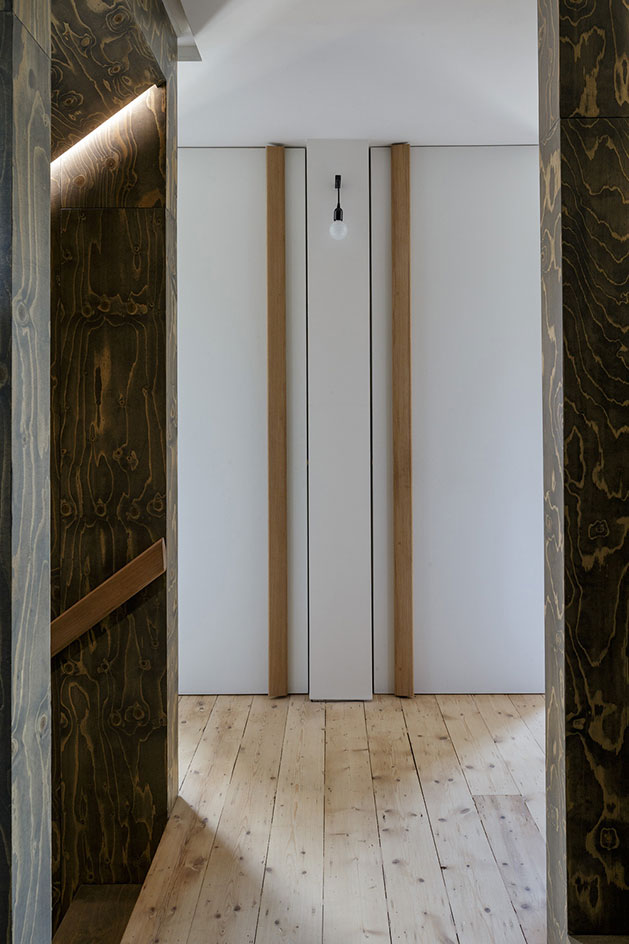
Different textures of timber - from light coloured and natural, to dark stained - create a rich and warm interior
INFORMATION
Receive our daily digest of inspiration, escapism and design stories from around the world direct to your inbox.
Photography: Tim Crocker
-
 Five of the finest compact cameras available today
Five of the finest compact cameras available todayPocketable cameras are having a moment. We’ve assembled a set of cutting-edge compacts that’ll free you from the ubiquity of smartphone photography and help focus your image making
-
 London label Wed Studio is embracing ‘oddness’ when it comes to bridal dressing
London label Wed Studio is embracing ‘oddness’ when it comes to bridal dressingThe in-the-know choice for fashion-discerning brides, Wed Studio’s latest collection explores the idea that garments can hold emotions – a reflection of designers Amy Trinh and Evan Phillips’ increasingly experimental approach
-
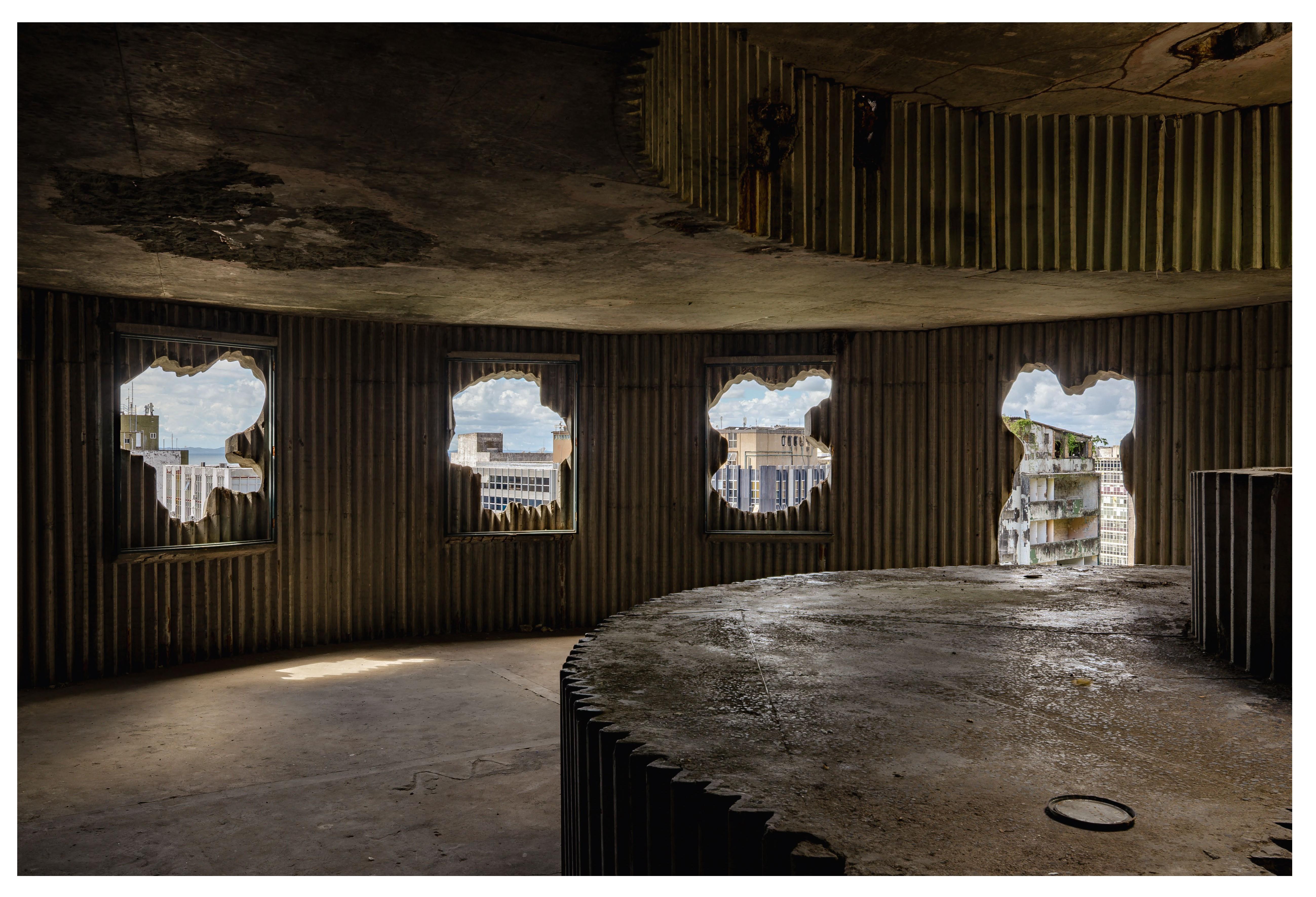 Arts institution Pivô breathes new life into neglected Lina Bo Bardi building in Bahia
Arts institution Pivô breathes new life into neglected Lina Bo Bardi building in BahiaNon-profit cultural institution Pivô is reactivating a Lina Bo Bardi landmark in Salvador da Bahia in a bid to foster artistic dialogue and community engagement
-
 Meet Forefront, a cultural platform redefining the relationship between art and architecture
Meet Forefront, a cultural platform redefining the relationship between art and architectureForefront co-founder Dicle Guntas, managing director of developer HGG, tells us about the exciting new initiative and its debut exhibition, a show of lumino-kinetic sculptures in London
-
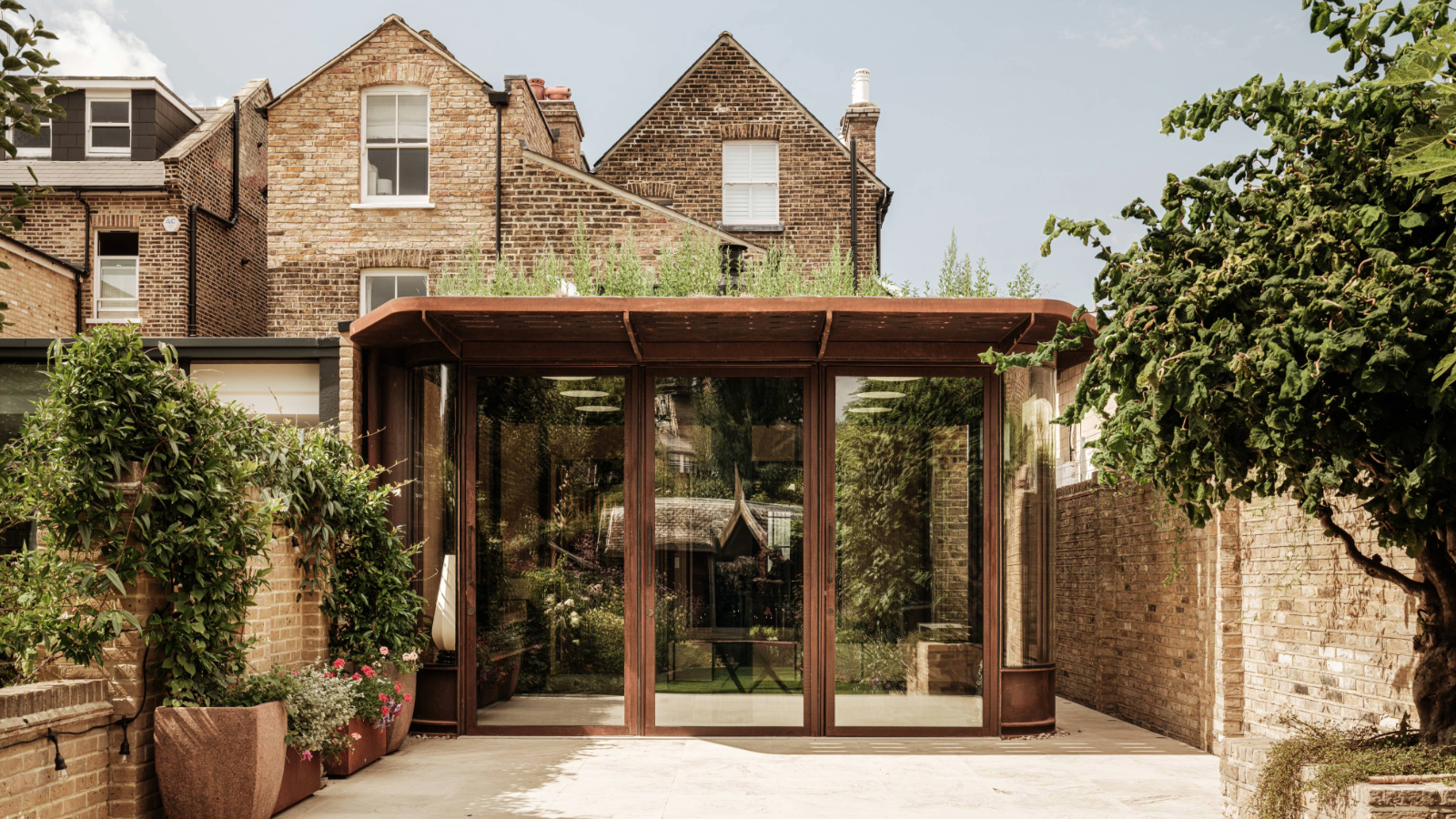 Corten curves and contemporary flair transform this terraced house in London
Corten curves and contemporary flair transform this terraced house in LondonCagni Williams Associates’ sensitive refurbishment of a south London Edwardian house features a striking and sustainable Corten steel extension
-
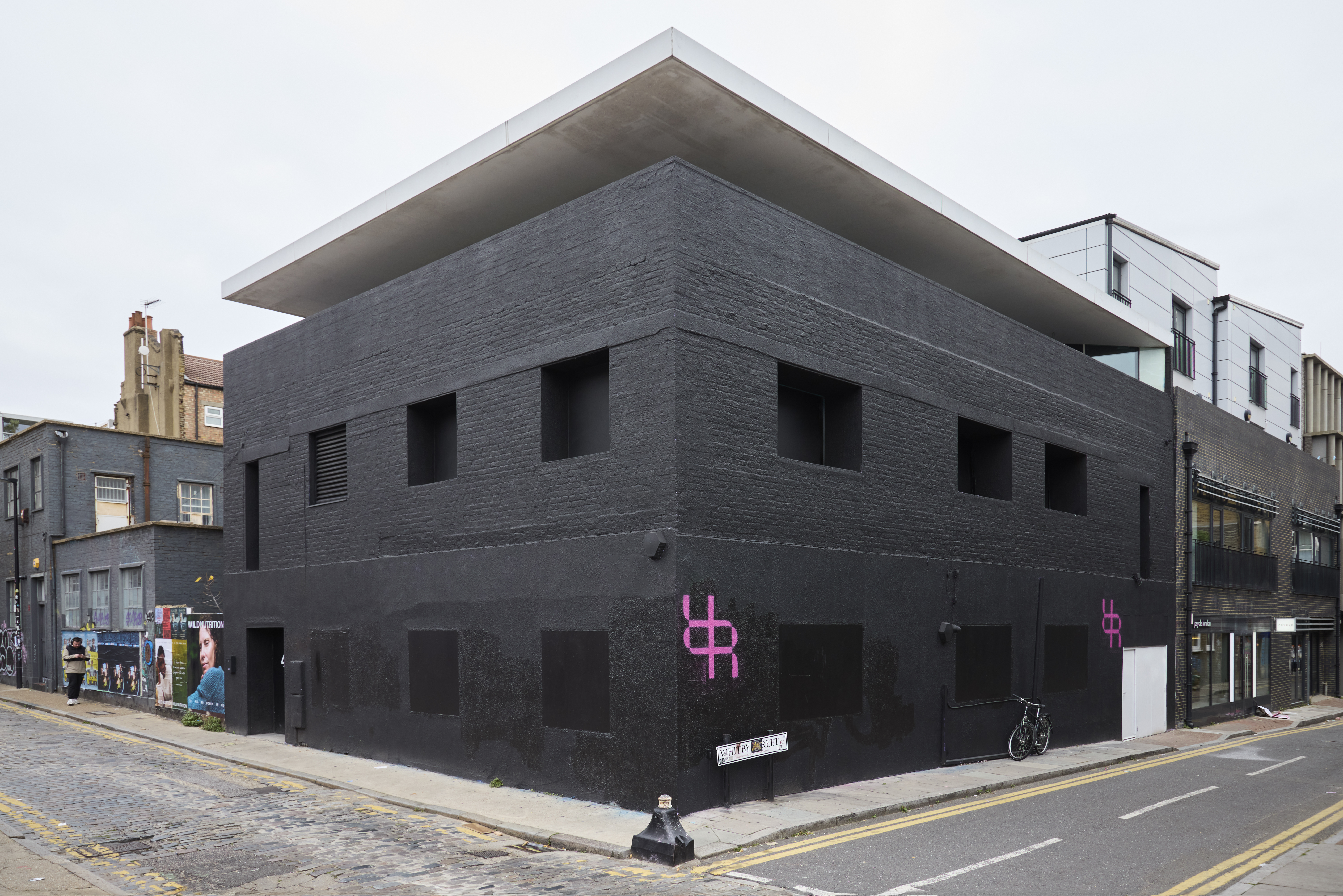 You may know it as ‘Dirty House’ – now, The Rogue Room brings 21st-century wellness to Shoreditch
You may know it as ‘Dirty House’ – now, The Rogue Room brings 21st-century wellness to ShoreditchThe Rogue Room – set in the building formerly known as Dirty House by Sir David Adjaye, now reinvented by Studioshaw – bridges wellness and culture in London's Shoreditch
-
 The architectural innovation hidden in plain sight at Frieze London 2025
The architectural innovation hidden in plain sight at Frieze London 2025The 2025 Frieze entrance pavilions launch this week alongside the art fair, showcasing a brand-new, modular building system set to shake up the architecture of large-scale events
-
 RIBA Stirling Prize 2025 winner is ‘a radical reimagining of later living’
RIBA Stirling Prize 2025 winner is ‘a radical reimagining of later living’Appleby Blue Almshouse wins the RIBA Stirling Prize 2025, crowning the social housing complex for over-65s by Witherford Watson Mann Architects, the best building of the year
-
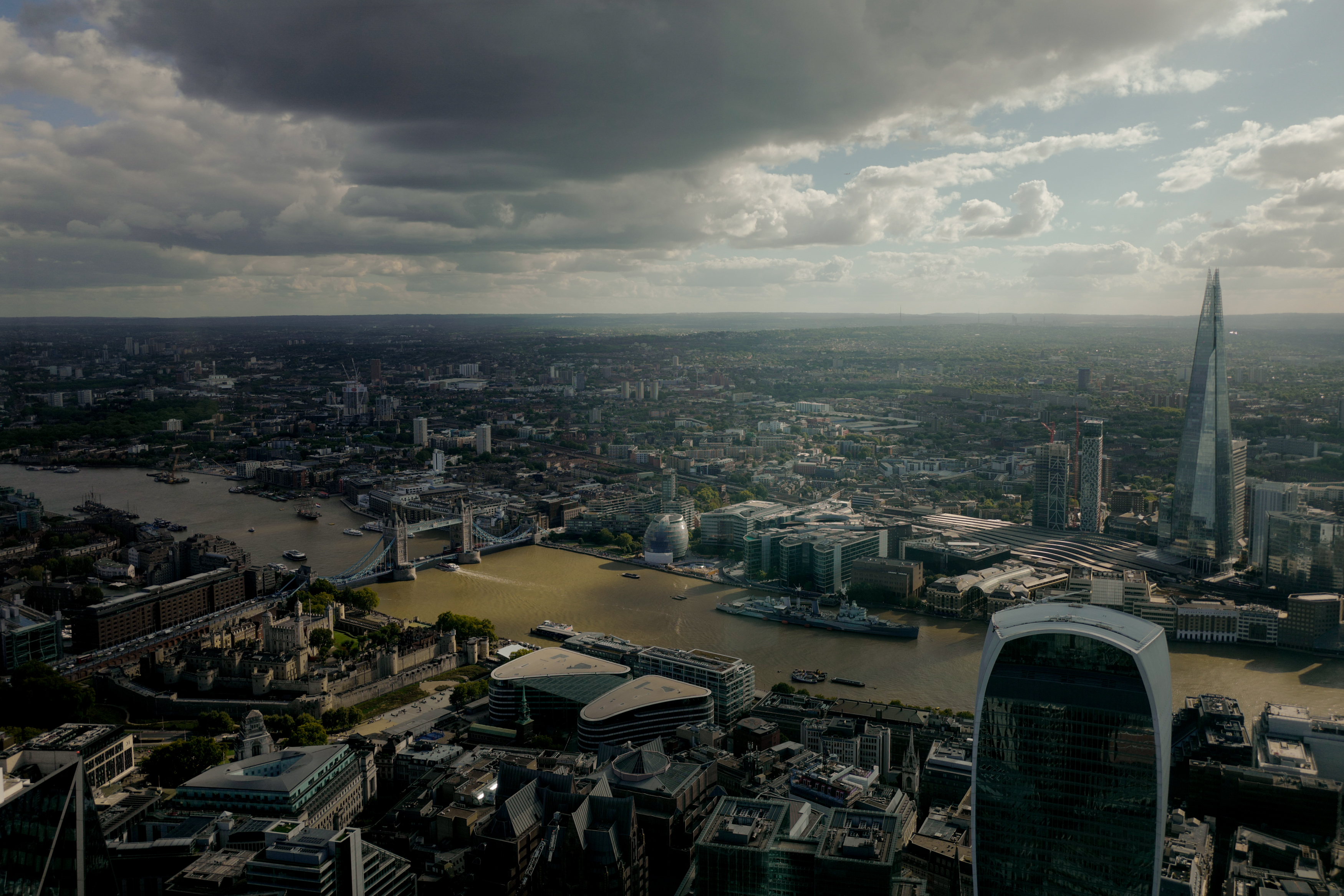 ‘Belonging’ – the LFA 2026 theme is revealed, exploring how places can become personal
‘Belonging’ – the LFA 2026 theme is revealed, exploring how places can become personalThe idea of belonging and what it means in today’s world will be central at the London Festival of Architecture’s explorations, as the event’s 2026 theme has been announced today
-
 Join us on a first look inside Regent’s View, the revamped canalside gasholder project in London
Join us on a first look inside Regent’s View, the revamped canalside gasholder project in LondonRegent's View, the RSHP-designed development for St William, situated on a former gasholder site on a canal in east London, has just completed its first phase
-
 The Royal College of Art has announced plans for renewal of its Kensington campus
The Royal College of Art has announced plans for renewal of its Kensington campusThe Royal College of Art project, led by Witherford Watson Mann Architects, includes the revitalisation of the Darwin Building and more, in the hopes of establishing an open and future-facing place of creativity